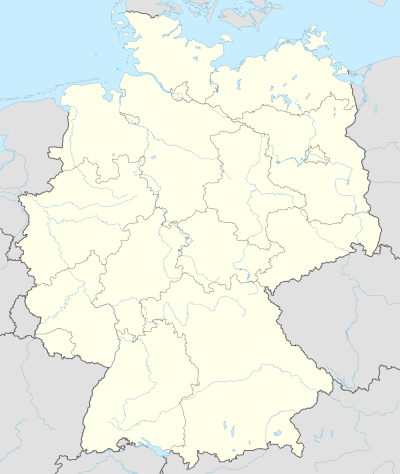작은 행성 반지름 간격
Small planet radius gap작은 행성 반지름 간격(Fulton [1]갭, 광증발원밸리 [2][3]또는 Sub-Neptune 사막이라고도[4] 함)은 지구 반경의 1.5배에서 2배 사이인 행성의 관측된 희소성으로, 광증발전에 의한 질량 손실 때문일 가능성이 높다.[5][6][7]케플러 엑소플라넷 개체군에서 바이모다빌리티가 2013년에 처음 관찰되었으며 광증발이 가까운 저대량 행성에서 대기 질량 손실을 유발할 수 있다는 새로운 가설을 확인할 수 있는 것으로 주목받았다.[5][8]이것은 모항성과의 작은 분리에 더 작은 반지름을 가진 맨 바위가 많은 중심부와 더 큰 분리에 더 큰 반지름을 가진 수소와 헬륨이 지배하는 봉투를 가진 행성으로 이어질 것이다.[5][8]분포의 바이모딜성은 2017년 캘리포니아-케플러 조사(California-Kepler Survey)에서 더 높은 정밀도 데이터를 통해 확인되었으며,[6][1] 이는 그해 말 광증발성 대량 손실 가설의 예측과 일치하는 것으로 나타났다.[7]
'갭'이라는 단어의 함축에도 불구하고, 풀턴 간격은 실제로 관측된 외행성 개체군에서 완전히 없는 반경의 범위를 나타내는 것이 아니라, 비교적 흔치 않은 것으로 보이는 반경의 범위를 나타낸다.[6]그 결과 '갭'[2][3][7] 대신 '밸리'를 사용하는 경우가 많다.구체적인 용어"풀턴 격차"벤자민 J. 풀턴의 박사 학위 논문은 1.5와 비록 이 반경 차이의 존재 백작으로 그것의 근본적인 메커니즘과 함께된 바 있는 그는 로버트 J.Trumpler Award,[9][10]2지구 반경의 행성들의 희소성을 확인 정밀 반경 측정을 위해 이름을 딴 것이다.y2012[8], 2013.[5]
오웬과 우의 광증진 모델 내에서, 중심부의 반경을 두 배로 하는 H/He 대기를 가진 행성이 대기 질량손실에 가장 안정적이기 때문에 반지름 간격이 발생한다.이보다 큰 대기를 가진 행성은 침식에 취약하고 그 대기는 중심부의 반경을 두 배로 증가시키는 크기로 진화한다.대기권이 작은 행성들은 H/He가 지배하는 대기를 갖지 못한 채 폭주 손실을 겪는다.[7]
기타 가능한 설명
참고 항목
참조
- ^ a b Boyle, Rebecca (2019-05-16). "As Planet Discoveries Pile Up, a Gap Appears in the Pattern". Quanta Magazine. Retrieved 2020-06-24.
- ^ a b Van Eylen, V; Agentoft, Camilla; Lundkvist, M S; Kjeldsen, H; Owen, J E; Fulton, B J; Petigura, E; Snellen, I (2018-07-06). "An asteroseismic view of the radius valley: stripped cores, not born rocky". Monthly Notices of the Royal Astronomical Society. Oxford University Press (OUP). 479 (4): 4786–4795. arXiv:1710.05398. doi:10.1093/mnras/sty1783. ISSN 0035-8711.
- ^ a b Armstrong, David J.; Meru, Farzana; Bayliss, Daniel; Kennedy, Grant M.; Veras, Dimitri (2019-07-17). "A Gap in the Mass Distribution for Warm Neptune and Terrestrial Planets". The Astrophysical Journal. American Astronomical Society. 880 (1): L1. arXiv:1906.11865. doi:10.3847/2041-8213/ab2ba2. ISSN 2041-8213.
- ^ McDonald, George D.; Kreidberg, Laura; Lopez, Eric (2019-04-29). "The Sub-Neptune Desert and Its Dependence on Stellar Type: Controlled by Lifetime X-Ray Irradiation". The Astrophysical Journal. American Astronomical Society. 876 (1): 22. arXiv:2105.00142. doi:10.3847/1538-4357/ab1095. ISSN 1538-4357.
- ^ a b c d Owen, James E.; Wu, Yanqin (2013-09-12). "KEPLERPLANETS: A TALE OF EVAPORATION". The Astrophysical Journal. IOP Publishing. 775 (2): 105. arXiv:1303.3899. doi:10.1088/0004-637x/775/2/105. ISSN 0004-637X.
- ^ a b c Fulton, Benjamin J.; Petigura, Erik A.; Howard, Andrew W.; Isaacson, Howard; Marcy, Geoffrey W.; Cargile, Phillip A.; Hebb, Leslie; Weiss, Lauren M.; Johnson, John Asher; Morton, Timothy D.; Sinukoff, Evan; Crossfield, Ian J. M.; Hirsch, Lea A. (2017-08-24). "The California-Kepler Survey. III. A Gap in the Radius Distribution of Small Planets". The Astronomical Journal. 154 (3): 109. arXiv:1703.10375. Bibcode:2017AJ....154..109F. doi:10.3847/1538-3881/aa80eb. ISSN 1538-3881.
- ^ a b c d Owen, James E.; Wu, Yanqin (2017-09-20). "The Evaporation Valley in the Kepler Planets". The Astrophysical Journal. American Astronomical Society. 847 (1): 29. arXiv:1705.10810. doi:10.3847/1538-4357/aa890a. ISSN 1538-4357.
- ^ a b c Lopez, Eric D.; Fortney, Jonathan J.; Miller, Neil (2012-11-21). "HOW THERMAL EVOLUTION AND MASS-LOSS SCULPT POPULATIONS OF SUPER-EARTHS AND SUB-NEPTUNES: APPLICATION TO THE KEPLER-11 SYSTEM AND BEYOND". The Astrophysical Journal. IOP Publishing. 761 (1): 59. doi:10.1088/0004-637x/761/1/59. ISSN 0004-637X.
- ^ "BJ Fulton Wins 2018 Robert J. Trumpler Award for 'Landmark' Exoplanet Discovery Using Keck Observatory". W.M. Keck Observatory. 2018-09-10. Retrieved 2018-09-11.
- ^ "IfA graduate receives prestigious award for work on extrasolar planets". University of Hawaiʻi System News. 2018-08-15. Retrieved 2018-09-11.
- ^ Venturini, Julia; Helled, Ravit (17 October 2017). "The Formation of Mini-Neptunes". The Astrophysical Journal. 848 (2): 95. arXiv:1709.04736. Bibcode:2017ApJ...848...95V. doi:10.3847/1538-4357/aa8cd0.
- ^ Mousis, Olivier; Deleuil, Magali; Aguichine, Artyom; Marcq, Emmanuel; Naar, Joseph; Lorena Acuña Aguirre; Brugger, Bastien; Goncalves, Thomas (2020). "Irradiated ocean planets bridge super-Earth and sub-Neptune populations". arXiv:2002.05243 [astro-ph.EP].



